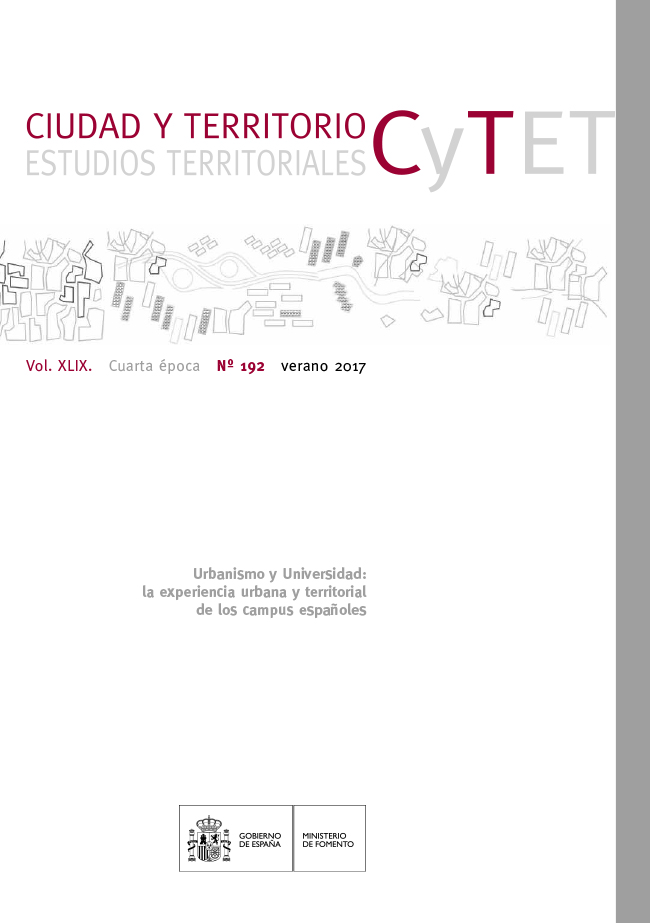Open University Spaces. International Experience Evaluating Them as Settings for Innovation and Learning
Keywords:
Open spaces, integrates campus, urban itineraries, social learning areasAbstract
Open university spaces play a key role in the renewed concept of a campus as a place of
learning, where knowledge exits the classroom and is present in every area of academic life, both
formal and informal. This concept of an “integrated campus” or “didactic campus” that is functionally
and structurally integrated into the city requires planning its open spaces so as to adapt them to
these objectives. It is a question of reactivating campus life by relying on processes similar to those
that occur in the city. The demand for a flexible, public space for culture and learning is not exclusive
to university settings, though it is there that producing and incentivizing such spaces makes the
most sense. The consolidation of new university models requires a correct definition of an open
space on three levels: urban (through its itineraries), neighborhood (around the university square)
and an intimate scale (that of social micro-spaces for learning). This article analyzes the different
trends at these three levels so as to learn from their successes and hardships in consolidating an
integrated campus learning model.
Downloads
Downloads
Published
How to Cite
Issue
Section
License
Copyright (c) 2017 Cecilia Ribalaygua, David Cabrera Manzano

This work is licensed under a Creative Commons Attribution-NonCommercial-NoDerivatives 4.0 International License.
Considering the provisions of the current legislation on Intellectual Property, and in accordance with them, all authors publishing in CyTET give -in a non-exclusive way and without time limit- to the Ministry of Transport, Mobility and Urban Agenda the rights to disseminate, reproduce, communicate and distribute in any current or future format, on paper or electronic, the original or derived version of their work under a Creative Commons Attribution-NonCommercial-NoDerivative 4.0 license International (CC BY-NC-ND 4.0), as well as to include or assign to third parties the inclusion of its content in national and international indexes, repositories and databases, with reference and recognition in any case of its authorship.
In addition, when sending the work, the author(s) declares that it is an original work in which the sources that have been used are recognized, committing to respect the scientific evidence, to no longer modify the original data and to verify or refute its hypothesis. Author(s) also declare that the essential content of the work has not been previously published nor will it be published in any other publication while it is under evaluation by CyTET; and that it has not been simultaneously sent to another journal.
Authors must sign a Transfer of Rights Form, which will be sent to them from the CyTET Secretariat once the article is accepted for publication.
With the aim of promoting the dissemination of knowledge, CyTET joins the Open Journal Access (OA) movement and delivers all of its content to various national and international indexes, repositories and databases under this protocol; therefore, the submission of a work to be published in the journal presupposes the explicit acceptance by the author of this distribution method.
Authors are encouraged to reproduce and host their work published in CyTET in institutional repositories, web pages, etc. with the intention of contributing to the improvement of the transfer of knowledge and the citation of said works.








 Enlace a CyTET en Linkedin
Enlace a CyTET en Linkedin